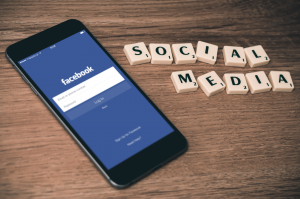By REGINA SÁNCHEZ JIMÉNEZ
It’s common use Facebook as a newspaper. When some event has just happened, many people open the application looking for breaking news. But Facebook is also used with that purpose because of its huge coverage of all news, particularly the news that newspapers and other media don’t pay attention to.
The last one that I received was an event of a charity concert organized by Un Micro para el Sahara (A Microphone for Sahara). This is a non-profit organization ran by young journalists.
The importance of this example is double, because we receive the information about the Sahara’s situation through Facebook and not from mass media. And because it’s necessary for NGOs to overcome misinformation sometimes found in the news media.

Social media (Photo from Flickr, courtesy of Hazma Butt).
As they exposed on their Facebook site, their goal is “ensure visibility for the helpless situation of the Saharan people that has been forgotten by the mass media.”
So, it’s another kind of journalism, headed by young journalists away from the big news corporations. These journalists are independents with non-commercial interests and they’re aware of the news media’s deficiencies.
Furthermore, they want the money raised to go to buy journalistic tools for support of the journalists’ work for public radio and TV of the Sahara and to organize workshops for them.
We have to think about the journalism that we want and the journalism that we consume, because it’s clear that quality journalism is not about the money and the resources, but about spirit and ability to inform without following political or economic agendas, just the purpose of meeting journalistic values.
So, if we continue to consume the big corporations’ journalism that neglects news that don’t provide them benefits, without trying to change it, we will encourage a form of partial journalism that doesn’t reflect the whole world.




